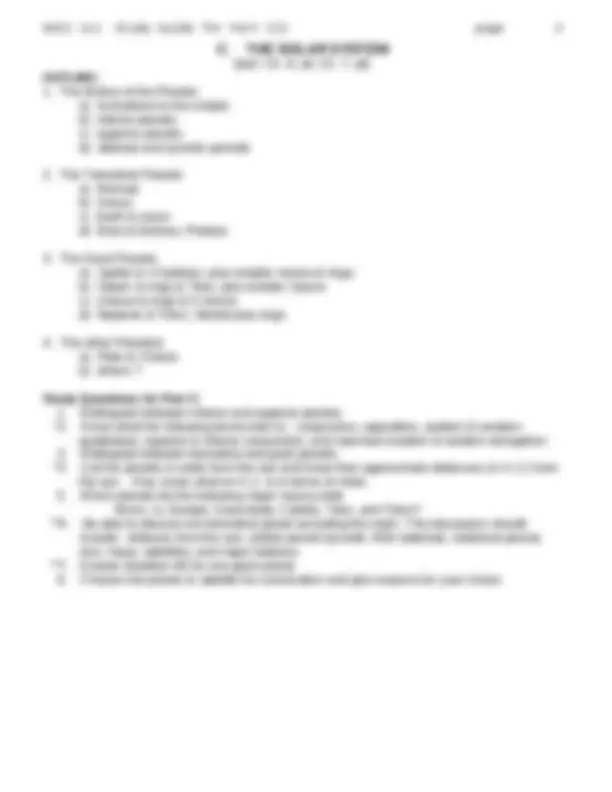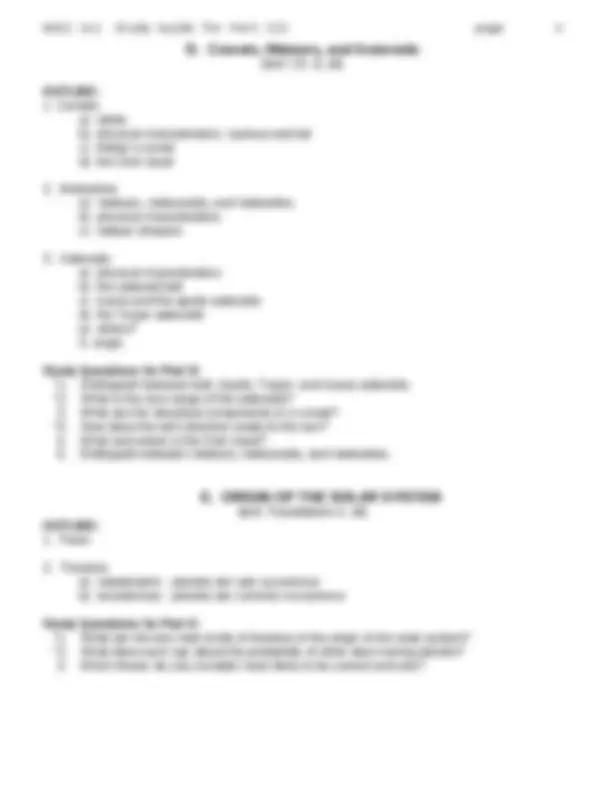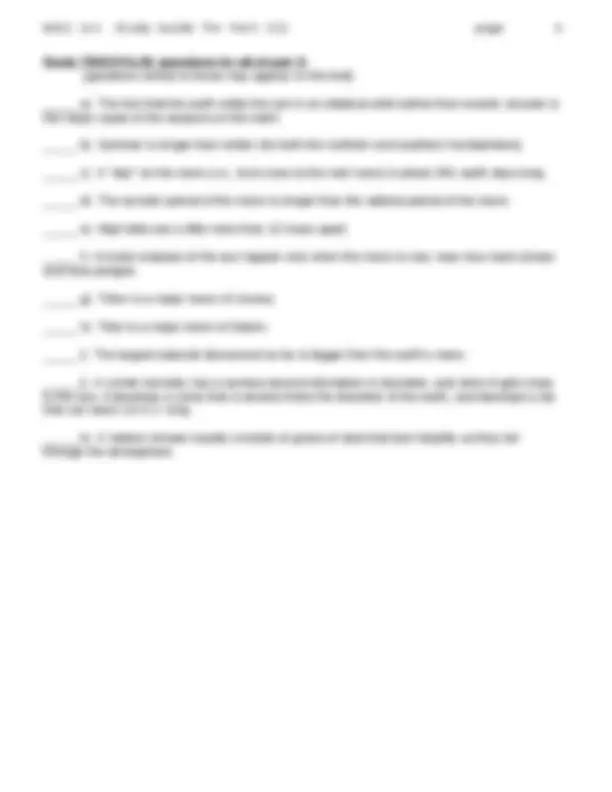





Study with the several resources on Docsity

Earn points by helping other students or get them with a premium plan


Prepare for your exams
Study with the several resources on Docsity

Earn points to download
Earn points by helping other students or get them with a premium plan
Community
Ask the community for help and clear up your study doubts
Discover the best universities in your country according to Docsity users
Free resources
Download our free guides on studying techniques, anxiety management strategies, and thesis advice from Docsity tutors
This study guide for part 3 of an astronomy course covers the solar system, including the earth, the moon, the solar system, comets, meteors, asteroids, and the origin of the solar system. It includes topics such as the orientation of the earth in space, the structure of the moon, the motion of the planets, and the theories of the origin of the solar system.
Typology: Study notes
1 / 5

This page cannot be seen from the preview
Don't miss anything!




Having surveyed our course (Part 1) and built our spaceship (Part 2) we are finally ready to take off on our journey through the universe. The first part of this trip will take us around our neighborhood: the solar system. In Section A we look back at our home base, Earth, from our new perspective from space. We will see where our seasons come from, a theory on the cause of ice ages, and where the expression "Age of Aquarius" comes from. In Section B we look at our nearest neighbor, the only place a human has personally visited so far: the moon. We will consider its motion, its phases, and its surface features. We will also consider the moon's effect on earth: eclipses and tides. In Section C we will deal with the major bodies of the solar system: the planets and their satellites (moons). We delay, however, discussion of the greatest body of the solar system, the sun, until Part 4 since the sun is a star and so inherently different than the rest of the solar system. In Section D we will look at the minor bodies in the solar system: meteors, asteroids, comets. Finally in Section E we consider theories on the origin of the solar system.
[text: Ch 1, Sections 6-7] OUTLINE:
[text: Ch. 1, Section 8-11; Ch. 5, Sections 6-9] OUTLINE:
[text: Ch. 8, all] OUTLINE:
[text: Foundations II, all] OUTLINE:
Study TRUE/FALSE questions for all of part 3: (questions similar to these may appear on the test) _____ a) The fact that the earth orbits the sun in an elliptical orbit (rather than exactly circular) is the major cause of the seasons on the earth. _____ b) Summer is longer than winter (for both the northern and southern hemispheres). _____ c) A "day" on the moon (i.e., from noon to the next noon) is about 29½ earth days long. _____ d) The synodic period of the moon is longer than the siderial period of the moon. _____ e) High tides are a little more than 12 hours apart. _____ f) Annular eclipses of the sun happen only when the moon is very near new moon phase and near perigee. _____ g) Triton is a major moon of Uranus. _____ h) Titan is a major moon of Saturn. _____ i) The largest asteroid discovered so far is bigger than the earth's moon. _____ j) A comet normally has a nucleus several kilometers in diameter, and when it gets close to the sun, it develops a coma that is several times the diameter of the earth, and develops a tail that can reach 10 A.U. long. _____ k) A meteor shower usually consists of grains of dust that burn brightly as they fall through the atmosphere.